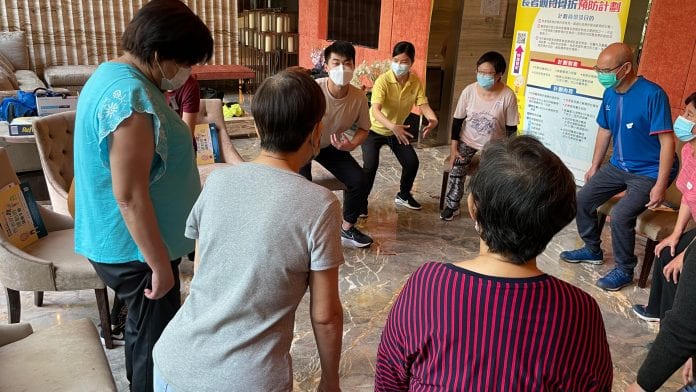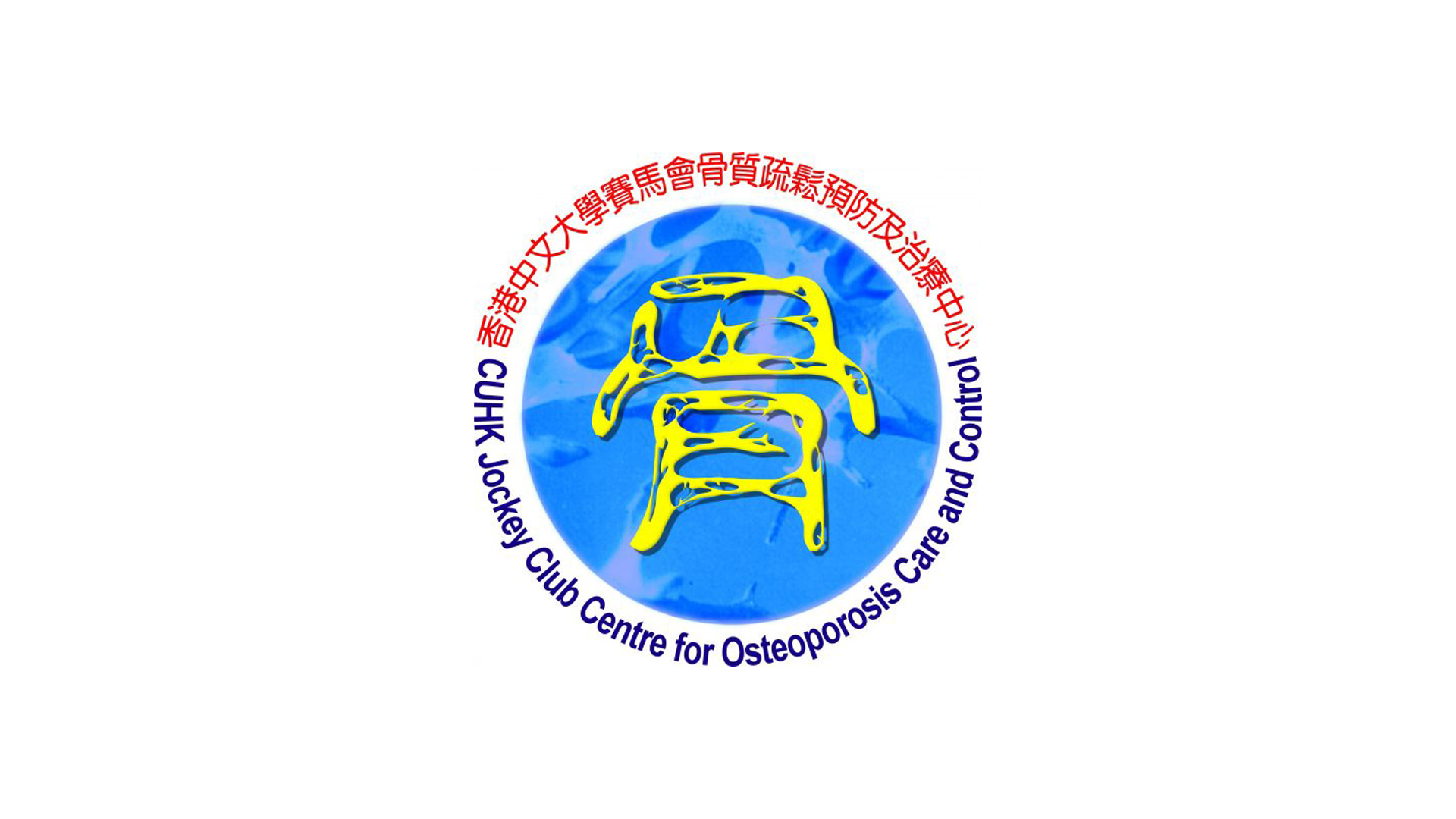
Professor Timothy Kwok of the Chinese University of Hong Kong Jockey Club Centre for Osteoporosis Care and Control discusses its service model of hip fracture prevention for older people in Hong Kong.
Fragility fractures are associated with increased morbidity and mortality globally and locally. They are caused by a combination of osteoporosis and propensity to fall, and both of these conditions are multifactorial. Osteoporosis is a “silent disease.” It weakens the bones but usually shows no symptoms until a fragility fracture occurs. Among those fractures, hip fragility fractures usually require surgical intervention and affect functional return.
A multi-centre cross-sectional study reported a 16% increase in institutionalisation after hip fragility fractures1 and deteriorated mobility remained a year after fractures in 70% of the patients. These impose major threats on functional independence in older age and heavy burdens on the individuals, their family, and society. The exponential rise of hip fragility fracture incidence after age of 65 is double every five years.2 The number of people aged 65 and above admitted for hip fracture surgeries locally was estimated to have increased by 71% over the last two decades.3 Meanwhile, 33% of the population in Hong Kong will be aged over 65 years by 2039.4 Hip fragility fractures has already cost HKD511m in the public sector in 2017.5 Without proactive intervention, expenditure on hip fragility fracture will increase exponentially alongside the rapidly ageing population.
The rising burden of hip fragility fractures
The rising burden from hip fragility fractures demands a prompt response. Ample evidence has shown that fall risks can be reduced by 21% with well-designed balance exercises;6 osteoporosis can be effectively diagnosed by Dual energy X-ray absorptiometry imaging (DXA) and hip fragility fracture incidence can be reduced by 28% with subsequent use of anti-osteoporosis medication.7 Lifestyle modifications such as a balanced diet, optimal physical activity, and a well-designed environment can also help mitigate fracture risk by 60%.8 The major challenge in fragility fracture prevention then goes to the public awareness of screening for the osteoporosis and the start of interventions.
Nevertheless, osteoporosis has long been recognised as a common but neglected disease. Only 4.2% of hip fracture patients were diagnosed and treated for osteoporosis before their fragility hip fracture.1 The major reasons for this are the lack of public awareness and the lack of public funding support in Hong Kong. An effective pre-screening strategy may prompt more older people to go for osteoporosis screening by DXA. Effectiveness of a pre-screening questionnaire followed with DXA screening has been supported by a large randomised trial in United Kingdom. The study found a 28% reduction in five-year hip fracture risk in women aged 70 to 85 with a pre-screening, twelve-item Fracture Risk Assessment Tool (FRAX) questionnaire and subsequent DXA, as well as anti-osteoporotic treatment for the selected participants.
Hong Kong cohort study
Based on the data of the Chinese University of Hong Kong Jockey Club Centre for Osteoporosis Care and Control prospective cohort study of 4000 older men and women since 2001 (Mr/Ms Os Hong Kong cohort study), we have compared the cost-effectiveness among no screening, universal DXA screening, and osteoporosis pre-screening with FRAX followed by DXA screening, in preventing hip fracture in Chinese older adults in Hong Kong.9 Findings suggested that universal DXA screening, and pre-screening with FRAX followed by DXA screening, were rated either the most or the second most cost-effective strategy in hip fracture prevention in both gender and all age groups.9
Nonetheless, sensitivity of the 10-year hip fragility fracture prediction using FRAX alone was rather low, especially in men.10 We then found that the combination of the FRAX and a validated five-item questionnaire for sarcopenia (SARC-F) increased the sensitivity for hip fracture prediction from 58.7% to 76.2% in men and from 69.9% to 78.3% in women aged 65 years or above.10 This combined questionnaire (FRAX+SARC-F) may therefore be useful in promoting public awareness on hip fracture prevention and prompt more and targeted DXA screening in older adults.
was rather low, especially in men.10 We then found that the combination of the FRAX and a validated five-item questionnaire for sarcopenia (SARC-F) increased the sensitivity for hip fracture prediction from 58.7% to 76.2% in men and from 69.9% to 78.3% in women aged 65 years or above.10 This combined questionnaire (FRAX+SARC-F) may therefore be useful in promoting public awareness on hip fracture prevention and prompt more and targeted DXA screening in older adults.
Preventing fractures
Fall risk assessment, as subsequent fall prevention intervention, should be added in the management routine for those who are diagnosed with osteoporosis. This hip fracture prevention strategy requires a close collaboration between the primary care and community service providers. The logistics of such a collaboration is yet to be established in Hong Kong.
To establish such a service model and deliver evidence based preventive interventions against hip fragility fracture in the at-risk older adults, we kicked off a three-year community service model pilot in community-dwelling older adults aged 65 years or above in 2020. The project includes public education on osteoporosis and hip fracture prevention, and the use of FRAX+SARC-F questionnaire pre-screening for estimating their hip fragility fracture risk. The at-risk individuals are then invited to our centre for osteoporosis screening with DXA and fall risk assessment with a validated procedure, Physiological Profile Assessment.11 As there is also a positive association between sarcopenia and future falls and fractures, status of sarcopenia is also screened with bioimpedance for muscle mass, handgrip strength for muscle strength, and a six-meter walk test for physical performance, as advised by the Asia Working Group for Sarcopenia. Lifestyle counselling about fall prevention and bone health by an experienced registered nurse is provided after the screening procedures.
Those at a high risk of hip fractures (>3% in ten years) and those that may have a medical reason for fall, such as sarcopenia, frailty, dementia, osteoporosis, or visual impairment, will be assessed by our clinic doctor and be offered anti-osteoporosis medication treatment and corresponding management or referrals as indicated.
Those with balance issues will be referred to group exercise or a home-based Lifestyle-integrated Functional Exercise (LiFE) programme with home environment safety assessment, as appropriate, to improve their balance and functional strength and reduce fall risk.12 All these participants will receive tri-monthly follow-ups on their fall incidents and compliance of their anti-osteoporosis and fall prevention management for a year. Their fracture incidence will also be ascertained using a local, centralised electronic clinical management system for five years.
Encouraging results were evident at this early stage of the project. Out of the 267 participants we have enrolled, 98.7% of the participants were either diagnosed to have osteoporosis or identified to have increased fall risk. Among these, 125 (46.8%) were diagnosed with osteoporosis and 87 (69.6%) of those who were diagnosed with osteoporosis received anti-osteoporosis medication. Meanwhile, 207 (77.4%) were assessed to have moderate or above fall risk and among these, 97 (46.9%) and 149 (72.0%) were arranged with group exercise class and LiFE programme with home environment safety assessment, respectively.
To apply this service model to the local community, we have successfully recruited primary care doctors, community centres for older people, and orthopaedic and accident and emergency departments in hospitals to join our network of hip fracture prevention. Besides public education talks and health exhibitions, we have been using social media to publicise our programme. Our physiotherapist also trains staff and volunteers at community centres to deliver exercise interventions, using the train-the-trainer approach.
All in all, this model of care combines public education and questionnaire pre-screening to promote awareness of fracture risk; standardised procedures to assess osteoporosis and fall risks; counselling on lifestyle, osteoporosis medical management, exercise interventions to mitigate fracture risk; and involvement of major stakeholders in health and social services to support sustainability of the model. Through evaluation and advocacy, we hope that this model of care can be sustained in the longer term, so that the expected rising incidence of hip fractures can be contained.
References
- Leung KS, Yuen WF, Ngai WK, Lam CY, Lau TW, Lee KB, et al. How well are we managing fragility hip fractures? A narrative report on the review with the attempt to set up a fragility fracture registry in Hong Kong. Hong Kong Med J. 2017;23(3):264–71.
- Tsang SWY, Kung AWC, Kanis JA, Johansson H, Oden A. Ten-year fracture probability in Hong Kong Southern Chinese according to age and BMD femoral neck T-scores. Osteoporos Int. 2009;20(11):1939–45.
- Man LP, Angela Ho AWH, Wong SH. Excess mortality for operated geriatric hip fracture in Hong Kong. Hong Kong Med J. 2016;22(1):6–10.
- Demographic Statistics Section (1). Hong Kong Population Projections 2020-69. Census and Statistics Department, Hong Kong Special Administrative Region; 2020. 72 p.
- Chu LW, Chi I, Chiu AYY. Falls and fall-related injuries in community-dwelling elderly persons in Hong Kong: A study on risk factors, functional decline, and health services utilisation after falls. Hong Kong Med J. 2007;13(1):8–12.
- Sherrington C, Michaleff ZA, Fairhall N, Paul SS, Tiedemann A, Whitney J, et al. Exercise to prevent falls in older adults: An updated systematic review and meta-analysis [Internet]. Vol. 51, British Journal of Sports Medicine. BMJ Publishing Group; 2017 [cited 2020 Oct 9]. p. 1749–57. Available from: http://bjsm.bmj.com/
- Shepstone L, Lenaghan E, Cooper C, Clarke S, Fong-Soe-Khioe R, Fordham R, et al. Screening in the community to reduce fractures in older women (SCOOP): a randomised controlled trial. Lancet. 2018;391(10122):741–7.
- Määttä M, Terho E, Jokinen H, Pulkkinen P, Korpelainen J, Heikkinen J, et al. Lifestyle factors and site-specific risk of hip fracture in community dwelling older women – A 13-year prospective population-based cohort study. BMC Musculoskelet Disord. 2012;13:8–10.
- Su Y, Lai FTT, Yip BHK, Leung JCS, Kwok TCY. Cost-effectiveness of osteoporosis screening strategies for hip fracture prevention in older Chinese people: a decision tree modeling study in the Mr. OS and Ms. OS cohort in Hong Kong. Osteoporos Int. 2018;29(8):1793–805.
- Su Y, Woo JW, Kwok TCY. The Added Value of SARC-F to Prescreening Using FRAX for Hip Fracture Prevention in Older Community Adults. J Am Med Dir Assoc [Internet]. 2019;20(1):83–9. Available from: https://doi.org/10.1016/j.jamda.2018.08.007
- Lord SR, Menz HB, Tiedemann A. A physiological profile approach to falls risk assessment and prevention. Phys Ther. 2003;83(3):237–52.
- Clemson L, Fiatarone Singh MA, Bundy A, Cumming RG, Manollaras K, O’Loughlin P, et al. Integration of balance and strength training into daily life activity to reduce rate of falls in older people (the LiFE study): Randomised parallel trial. BMJ. 2012;345(7870):1–15.

























